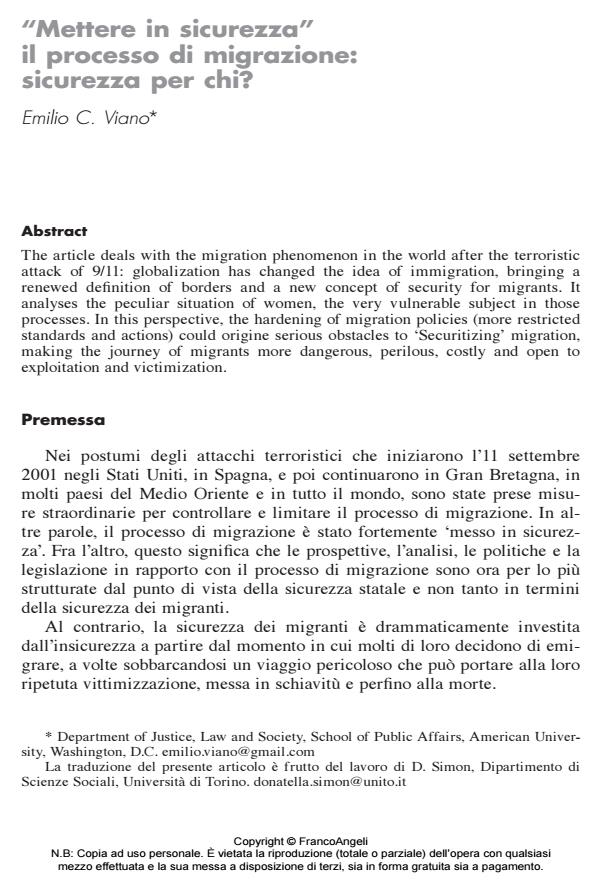"Mettere in sicurezza" il processo di migrazione: sicurezza per chi?
Titolo Rivista SICUREZZA E SCIENZE SOCIALI
Autori/Curatori Emilio C. Viano
Anno di pubblicazione 2013 Fascicolo 2013/1
Lingua Italiano Numero pagine 18 P. 155-172 Dimensione file 259 KB
DOI 10.3280/SISS2013-001013
Il DOI è il codice a barre della proprietà intellettuale: per saperne di più
clicca qui
Qui sotto puoi vedere in anteprima la prima pagina di questo articolo.
Se questo articolo ti interessa, lo puoi acquistare (e scaricare in formato pdf) seguendo le facili indicazioni per acquistare il download credit. Acquista Download Credits per scaricare questo Articolo in formato PDF

FrancoAngeli è membro della Publishers International Linking Association, Inc (PILA)associazione indipendente e non profit per facilitare (attraverso i servizi tecnologici implementati da CrossRef.org) l’accesso degli studiosi ai contenuti digitali nelle pubblicazioni professionali e scientifiche
I propose an assessment of the main aspects of migration in Europe since 1990. The current situation is very unfavorable for a regular and stable insertion of immigrants. Millions of immigrants are integrated in Europe, but their moral and material costs are always too high. Many of them are forced to flee elsewhere or to return to their own countries. The great economic development of the past twenty-five years has been the product of millions of temporary or completely black workers (nationals and immigrants). The reproduction of irregular migration is useful for the shadow economies. The lack of any legal security has brought to a sort of neo-slavery, always combined with racial criminalization
Emilio C. Viano, "Mettere in sicurezza" il processo di migrazione: sicurezza per chi? in "SICUREZZA E SCIENZE SOCIALI" 1/2013, pp 155-172, DOI: 10.3280/SISS2013-001013